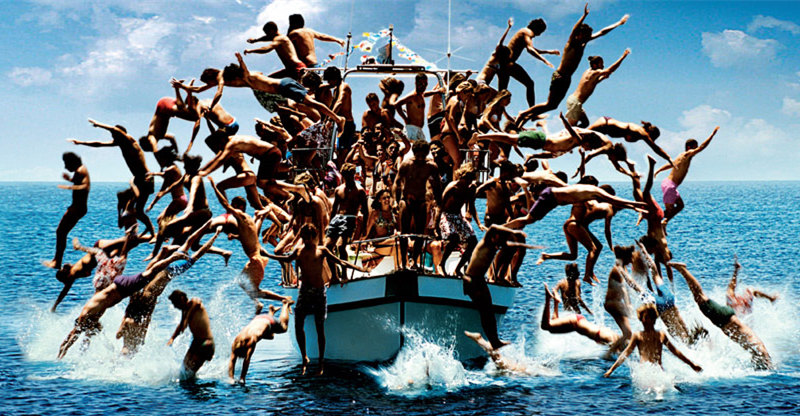It took Disney a while to get up to speed in the area of interactive TV shows for toddlers and tykes, but in 2006 the Disney Channel pulled out all the stops, borrowing a few ideas from the old “Mickey Mouse Club” shows in order to create an all 3-D CGI show for preschoolers. So instead of “Meeska, Mooseka, Mouseketeer, Mouse Cartoon Time Now is Here!,” the way it was with Disney’s popular after-school series for Baby Boomers, it’s Meeska, Mooseka, Mickey Mouse!” And today’s pre-schoolers are urged to use that invocation to get the “Mickey Mouse Clubhouse” started.
After that, it’s a “Dora the Explorer” style blend of narration and a series of questions for the tiny ones at home, along with pauses for them to shout out their answers at the television set. But Playhouse Disney (that part of Disney Channel geared for smallest viewers) didn’t skimp on the star power. In this series, not only does Mickey Mouse host and appear in cartoon adventures—so does Minnie Mouse, Pluto, Donald and Daisy Duck and Goofy. The characters look more rounded and, combined with backgrounds that are slightly reminiscent of the old Disney “Rolly Polly Olie” show for wee ones, it looks like a TV show for preschoolers.
Every episode—and the ones on “Mickey and Donald Have a Farm!” are no exception—introduces a minor problem or mystery, and Mickey usually invites his young audience at home to help him access his gigantic Mickey-shaped computer, which will identify the “mousekatools” needed to solve the day’s tiny mind-boggler. In this respect, it draws from the popular “Blue’s Clues” TV show as well. And just as “Blue’s Clues” had that catchy little song to help young viewers get into it, so does this well-done Disney show.
Kids are encouraged to summon “Toodles” (another Mickey thingamabobber) by saying in a sing-song voice, “Oh TOODLES!” and then the tools become part of the episode, usually three tools, with a surprise one popping up at some point. All of this is geared, of course, toward helping children develop their cognitive and problem-solving skills. They’ll get a little practice on color recognition, shapes, numbers, objects-and-uses, and other baseline knowledge needed to start kindergarten. And there’s plenty of emphasis on making good choices and learning how to interact with others. This one also throws in some lessons on telling time.
The theme song itself is pretty catchy, as is the song that they sing at the end when they do a “Hot Dog Dance” (“Hot dog, hot dog, hot diggety dog . . .”) to celebrate the great job they did in solving the problem/mystery.
Mickey and Donald Have a Farm! aired on November 11, 2012, while one of the bonus episodes, “Donald Hatches an Egg,” aired on July 13, 2012. Other bonus episodes included here aired much earlier: “Clarabelle’s Clubhouse Mooo-Sical” (Feb. 21, 2009), “Goofy the Homemaker” (Jan. 26, 2008), and “Goofy’s Petting Zoo” (March 9, 2007). In these, look for minor characters like Professor Ludwig Von Drake to make an appearance as well.
Mickey and Donald Have a Farm!
Eee-i Eee-i ohh. And on this farm some animals wandered off, leaving Mickey and the Clubhouse gang to search for them and bring them back to the farm.
Donald Hatches an Egg
When Goofy finds an egg among the rocks in his collection, the mystery begins. What kind is it? As it begins to hatch, Donald and his friends still keep guessing.
Clarabelle’s Clubhouse Mooo-Sical
Clarabelle rounds up the chicks from the petting zoo and tries to stage a musical production about nursery rhymes, but she works them so hard that the little things loose their peeps.
Goofy the Homemaker
With the help of his friends, Goofy builds a birdhouse for Baby Red Bird and his family.
Goofy’s Petting Zoo
While working at the local petting zoo, Goofy falls asleep and the animals wander off. So Goofy asks Mickey to help him find the missing animals and return them to the zoo.
“Mickey Mouse Clubhouse” is aimed at pre-schoolers, and the “I Spy”-style variety makes it interesting for preschoolers to eagerly anticipate the episode’s “tools” and to help select the right ones for the right situations. It’s a matching game, ultimately, that’s slow-paced enough for little ones and far less sassy and savvy than the original adult-oriented cartoons. Watching this show, in fact, makes you realize just how adult some of the classic Disney cartoons can be, in terms of their subject matter and nuances. This one is purely for the five-and-under set. Like all Disney DVDs for small ones, it’s enabled with “Fast Play,” so once a kid puts the disc in it takes care of everything . . . including a bevy of previews.
Video:
Like the more recent episodes of “Mickey Mouse Clubhouse,” the ones on this DVD are presented in 1.78:1 aspect ratio. Colors are bright and cheery, but, as on previous releases, the overall look of the 3D animation is somewhat flatter than you’d expect. But this might be by design. After all, it’s Disney we’re talking about, and they’ve made a science out of family programming.
Audio:
The audio is an English, French, or Spanish Dolby Digital 2.0, with subtitles in English SDH, French and Spanish. For 2.0, it’s a bright and peppy soundtrack that especially comes to life when the music plays.
Extras:
Included is a packet of organic lettuce seeds for the child to plant, provided by seedsofchange.com.
Bottom line:
Parents who know this show know what they’re getting for their toddlers to four year olds. The quality doesn’t vary all that much from episode to episode, and while this release groups two shows featuring the same “let’s find the animals” plot, that complaint of too much similarity is probably the only strike against this collection.


